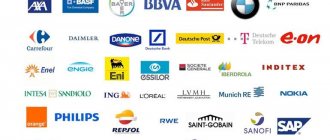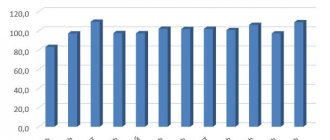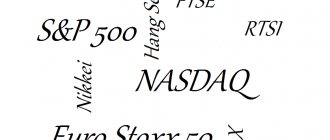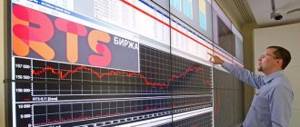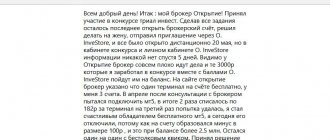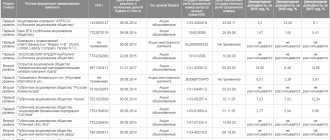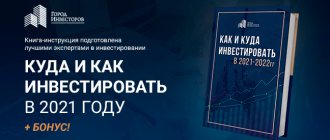What is body mass index
Body mass index (BMI, Body Mass Index, BMI, Quetelet index) is the ratio of height and weight.
BMI helps to find out whether a person has enough fat, whether it is time to lose weight or, conversely, gain weight, and is calculated using the formula: BMI = weight (kg) / height² (m)
Next you need to look at the value in the table. The World Health Organization (WHO) BMI Nutritional status has established the following indicators for people over 20 years of age:
| Height to weight ratio | Body mass index |
| Underweight | less than 18.5 |
| Norm | 18,5–24,9 |
| Obesity | 25–29,9 |
| Obesity I degree | 30–34,9 |
| Obesity II degree | 35–39,9 |
| Obesity III degree | more than 40 |
For children and adolescents, the exact values vary depending on age. Standards for people 5–19 years old can be found on the WHO website.
Mass Index - indicator for MetaTrader 5
Mass Index - mass index. This index was popularized by Tushar Chande and Donald Dorsey. It is calculated by summing the exponentially smoothed moving average of the daily ranges (high-low) over the last 25 periods (usually the last 25 periods). The purpose of this index is to identify trend reversals by measuring the narrowing (widening) of the average range between the high and low prices. When this range expands, the mass index increases, and when it narrows, it decreases.
Must read: Subscribe to 100% Bonus on every deposit
To identify a buy (sell) signal, an exponential moving average (for example, with a period of 9) is used. Since the mass index attempts to predict a trend reversal, a long position is entered when the moving average indicates a downward trend, and a short position is entered when the moving average indicates an uptrend.
In this indicator, the indicator averaging can be changed:
The indicator uses the classes of the SmoothAlgorithms.mqh library (need to be copied to the terminal_data_directory\MQL5\Include), a detailed description of working with which was published in the article “Averaging price series without additional buffers for intermediate calculations”.
BB XMACD indicator is a simple variation of the MACD indicator, which helps determine points of change in trend direction, as well as the strength of the current trend.
Broker websites in Russian:
- Binarium
Free account opening! Bonus $3500!
Registration
- FinMax
Gifts for new traders up to $3000!
Registration
Standard MACD histogram with the ability to select averaging algorithms from ten possible options, made in color and with alerts.
Klinger Volume Oscillator is a Klinger volume oscillator with the ability to select averaging algorithms from ten possible options, made in color.
Must Read: Simple Options Strategies and Profitable Solutions
An indicator that calculates the volume per second (or period) corresponding to the MA.
Why know your body mass index?
It is used to find out the risks of diseases. WHO states the Mean Body Mass Index (BMI) that excess weight increases the risk of type 2 diabetes, coronary heart disease, breast, uterine, colon, prostate, kidney and gallbladder cancer.
On average, 2.8 million deaths and 35.8 million disabilities are associated with excess weight worldwide per year.
WHO believes that for good health, every person should strive for an index of 18.5–24.9. The risk of disease increases between 25 and 29.9, and after 30 it increases significantly.
Installation and configuration of the indicator
To calculate the Mass Index indicator, you must first make the following settings:
- EMA Period. We set the working period of the exponential moving average.
- Second Period. In this section, we introduce the period for the auxiliary MA.
- Levels. Initially, the software set the values to 26.5 and 27. These are the recommended values for the original tactics.
- Sum Period. Indicates the number of deadline periods to be applied.
Experts recommend not changing the standard indicators that are defined by default. Individual settings for a time frame or other instrument are allowed only if the investor has sufficient experience working with this indicator.
When changing values, you must remember that a decrease in the number of periods means an increase in volatility, as a result of which the number of false signals is highly likely to increase. Over-adding periods may cause important messages from the Mass Index to be missed.
Signals
Increase
Mass Index does not show trend direction. If it falls or rises, this does not mean that the value will fall/rise along with it. To understand the signals, you need to use additional technical analysis tools.
The resulting signal is called a “reversal hump.” It appears after the indicator's moving average first crosses the 27 mark below and then drops below the 26.5 level.
Increase
Let's look at how the Mass Index is used on a currency pair with a candlestick chart. When setting the timeframe, you should avoid fairly short periods, as noise may occur. We place an indicator with standard parameters on the Mass Index chart, as well as an additional exponential moving average. We wait for the completion of the formation of the “reversal bulge” signal, after which we analyze the EMA:
- When its position and slope relative to the price corresponds to a downward trend, you need to buy.
- When the trend is up, the position is ready for implementation.
Who came up with the idea of calculating body mass index?
The formula itself was derived by Adolphe Quetelet (1796-1874) - the average man and indices of obesity in 1832 by the Belgian astronomer, mathematician and statistician Adolphe Quetelet. But it became known only 140 years later, after the study Indices of relative weight and obesity by physiologist and obesity specialist Ancel Keys. He analyzed the parameters of 7,400 people from five countries and compared different formulas for determining excess weight. It turned out that BMI, despite its simplicity, most accurately predicts overweight and obesity.
This opened up great opportunities for large-scale research. Scientists no longer need to measure the amount of fat using expensive and complex methods: they can quickly calculate the indices of hundreds of people, including those from past decades, and draw conclusions.
However, such methods are not always suitable for individuals. After all, when it comes to health, you want the true numbers, not some average number.
Money management
It is believed that professional traders come to apply the basics of money management. They already have positive experience in options trading and, in order to get a stable profit from trading, they introduce the principles of money management into their work. If you are just starting your first steps in options, get to know these principles and try to put them into practice as early as possible, and then your work will become more effective.
Money management is a consciously and thoughtfully built strategy for capital management that answers such important questions as how to work with a deposit correctly, how to spend it economically and earn income, and how to ensure that there are always funds on the deposit. If trading is your main way of generating income, apply the rules of money management :
- Trading with a minimum of money : it is recommended to spend a minimum of money on options trading; bet no more than 5% of the deposit on options; participate in options whose price is less than your funds; work with a proven broker who guarantees you results. By following these principles, you will preserve your capital.
- Trading with a minimum deposit : it is recommended to trade with a minimum deposit in the account; do not put your entire capital on trading one option; work with the deposit thoughtfully, allocate a certain limit of funds that are allowed to trade and not go beyond it. By following these principles, you will save your capital.
- Trading with a minimum amount of assets : it is recommended to gradually try your hand at options trading; trade starting with 2-3 assets, and then gradually increase the complexity of the work. By following these principles, you will organize productive work.
- Trading without emotions : it is recommended to work in the market only with the right working attitude; remove unnecessary emotions that can interfere with concentration and making the right decision. By following these principles, you will get the most out of your trading.
How accurate does body mass index predict?
Despite the fact that BMI is still widely used in medicine, new evidence is emerging about its inaccuracy. Here are some facts that prove that body mass index is not the best way to determine whether you are overweight or not.
BMI does not show the actual percentage of fat and muscle
The formula is too simple. Thus, the BMI of a muscular athlete may coincide with that of an obese, untrained person. They will weigh the same, but their body fat percentage, appearance, and health risks are very different.
This was confirmed by a study of Body Mass Index as a Predictor of Percent Fat in College Athletes and Nonathletes of 439 people. The body mass index of athletes and untrained men often showed excess weight when there was none. Women with extra pounds, on the contrary, were within the normal range.
Similar results were obtained in a large-scale study, Accuracy of Body Mass Index to Diagnosis Obesity in the US Adult Population, involving 13 thousand people. Scientists compared the body mass index value and the actual percentage of fat obtained using bioimpedance analysis. BMI showed obesity in 21% of men and 31% of women, and analysis showed obesity in 50% of men and 60% of women.
Body mass index is wrong about half the time, reassuring overweight people.
BMI does not take into account gender and age
The index framework was made universal to make it more convenient to conduct large-scale research. At the same time, the amount of fat in women and men differs by an average of 10% Sex differences in human adipose tissues - the biology of pear shape, so it is incorrect to apply the same values to both sexes.
In addition, the proportions of muscle and fat tissue in the body change. With age, metabolism slows down, muscle tissue begins to break down and fat deposits begin. Therefore, for correct conclusions, it is necessary to The effect of sex, age and race on estimating percentage body fat from body mass index: The Heritage Family Study take into account both the sex and age of the person.
BMI does not take into account the three-dimensionality of a person
Professor Nick Trefenthen from the University of Oxford questioned the current BMI formula. The scientist claims BMI (Body Mass Index) that it does not take into account the real features of the human physique and provides inaccurate data, since changes in height and weight occur non-linearly. Shows short people that they are slimmer than they are, and makes tall people believe they are fatter.
Trefenthen recommended a new calculation method, which, in his opinion, would give more correct results.
BMI=1.3 * weight (kg) / height 2.5 (m)
At the same time, the professor believes that any formula will be imperfect, since a person is too complex.
Retail in the wake of the pandemic: How the landscape of Russian retail has changed
2020 can already be called an extremely unsuccessful year for the Russian economy. The IMF predicts that Russia's GDP will fall by 6.6% - the worst decline in the last 11 years. Periodically emerging news about the actions of the authorities in connection with the “second wave” of coronavirus, as well as the political situation, increase fears in the market. For now, retailers still have time to take a breath and carefully analyze their work in a shrinking market, restrictions on physical retail and the growth of online sales channels. E-pepper.ru editor-in-chief Igor Bakharev and EWDN co-founder Vladislav Shirobokov conducted interviews with representatives of retailers and experts and prepared an analysis of the market situation as of early October 2021. We present to you the first part of this report.
According to Rosstat and the Ministry of Economic Development, the retail trade market in Russia has sharply decreased. The sentiment of Russian consumers (Consumer Confidence Index) reached a historical low of 62 points. At the same time, more than ¾ of the population is in saving mode.
The worst month by all indicators was April, when retail trade turnover in the non-food segment decreased by 36% year-on-year. The decline was due to the introduction of quarantine restrictions, when many shopping centers were closed. At the peak of self-isolation, the Shopping Index (store occupancy level) fell by 75-80%.
Offline sales declined among players from different segments:
- At the end of May, 38 stores of the Detsky Mir chain in Russia, as well as all 58 stores of the ELC and ABC chains, temporarily suspended their operations. As a result, net profit in the first half of 2021 decreased by 49.7%.
- Even the development of the online channel did not help M.Video to keep from falling in the second quarter. The company's net turnover decreased by 8.9% year-on-year. However, over the six months the retailer showed an increase in turnover of 6.4%.
- According to one of the largest players in the jewelry industry, their sales fell by at least 80-85%. The jewelry company Sokolov talks about a drop in sales by 95-97%.
Interestingly, for the first time in 5 years, non-public companies chose not to disclose their sales results. This did not happen even during the 2021 crisis.
General Director of Infoline-Analytics Mikhail Burmistrov: at the end of the year, according to the basic forecast, the turnover of Russian retail may decrease by 0.7%, to 33.3 trillion rubles. A pessimistic estimate suggests a fall of 2%, to 32.9 trillion rubles year on year. This is the first year-on-year decline in retail trade turnover since at least 2000.
Svetlana Bobrova, head of the customer relations group at Nielsen Russia, notes that although formally in the second quarter of 2021 the FMCG market grew by 3.5% compared to the same period last year, these values should be looked at too optimistically. The main driver of this growth was the inflation factor, which contributed 4.1% to the dynamics. Real consumption decreased by 0.6%.
“More and more consumers are finding themselves unable to maintain the same level of spending, and the list of “necessary” goods is narrowing. The market’s return to sustainable growth should be expected only when the situation with coronavirus stabilizes,” says Bobrova.
Large retailers staged an eCommerce race
Against this background, large retailers are actively increasing online sales. This channel has already been opened by almost all players, even those who were previously skeptical about it. The pioneers of the industry are growing by tens of percent.
The share of online commerce in the Russian retail market for the first time exceeded 10% in the first half of the year, according to AKIT. The market volume amounted to 1.654 trillion rubles.
By 2024, e-commerce will account for 19% of total retail sales, predict the analytical agency Data Insight.
“The online channel demonstrated fantastic growth rates in 2021 and reached 3.3% of the total market in April-May 2021, and 5% in June. Few could have imagined such values at the beginning of this year,” says Svetlana Bobrova, head of the Nielsen Russia client group.
According to the development director of AliExpress Russia, Dmitry Selikhov, according to the results of the first half of the year, all the retailer’s main indicators increased.
- The marketplace increased sales in June by 60% compared to April and by 30% compared to May.
- In June, buyers on AliExpress made 25 million orders.
- The number of daily unique users on the mobile platform grew by 17% year-on-year to 8.8 million.
- The number of daily buyers reached 1.7 million people.
- The average bill increased by 38% year on year.
WildBerries Development Director Vyacheslav Ivashchenko: Wildberries turnover in the 2nd quarter of 2021 increased by 123% to RUB 103.4 billion. (net turnover of the company, taking into account returns), and in pieces - by 200% compared to the same period last year. In April-June, the number of registered Wildberries users increased by 6 million to 30 million people. The audience growth was approximately 3 times year on year. The consumer basket has changed, and the number of goods in one order has increased. The trend towards reducing consumer spending is also obvious: Russians are choosing inexpensive goods and abandoning luxury items.
Ozon CFO Daniil Fedorov: Turnover from sales of Ozon goods and services in the second quarter of 2021 increased by 188% year-on-year, to 45.8 billion rubles. During the reporting period, the company earned more than in the entire 2021. The pandemic not only brought spontaneous buyers online, it contributed to the formation of the habit of making regular purchases in this channel. Every fourth new customer made a repeat order after the opening of offline outlets, every seventh made two orders or more. In total, the number of new Ozon users increased by 84% year-on-year in April-May 2021. The number of orders in the second quarter increased almost 2.5 times, to 14.6 million.
In the wave of quarantine: who won and who lost
Food comes to every home
The main beneficiary in this situation were grocery chains.
The Russian eGrocery market has increased significantly due to quarantine and the fact that almost all players have opened delivery. Either an independent service, or through food delivery services. Even those traditionally far from online are opening their own online stores. Players who invested in the development of logistics and warehouses last year especially benefited. In particular, Perekrestok was able to displace Utkonos from first place in the list of the most active eGrocery companies. At the same time, the Sbermarket service is developing so actively that it easily took second place in the InfoLine rating.
- X5's revenue for the half year increased by 14.2% year-on-year and amounted to 962.625 billion rubles, net retail revenue increased by 14.5% to 961.435 billion rubles.
- SberMarket's turnover at the end of the second quarter of 2021 increased 3.5 times compared to the first quarter of 2020.
- The total revenue of the Magnit chain in January-June increased by 16% - to 763.361 billion rubles, retail revenue - by 15.7%, to 743.959 billion rubles. Net profit increased by 1.8 times.
President Denis Sologub says that if before the pandemic the share of online sales in the company was about 3%, then during 2 months of quarantine it increased to 5% of turnover.
“At the same time, we must take into account that the trade turnover itself has grown significantly: like-for-like grew by 25–30% in March–June,” he assures.
However, it is too early to relax. According to Mstislav Voskresensky, founder of the Directfood consulting agency, the market, even having tripled, only reached 1.5% of total sales, which is negligible.
“By this indicator, we are still in the company of third world countries. Utkonos knows better than anyone about the situation in Russia; over 20 years of work there, it has not been possible to exceed the threshold of 10 thousand orders per day in a city with an income level per person comparable to Eastern European countries. Add to this the declining growth rates of the Russian economy year after year, and we can predict the prospects for market development for the next 5-10 years,” notes Voskresensky.
Russians are passionate about repairs
Also in the black were retailers in the segment of household goods and repairs, because Russians spent a lot of time at home during these months and preferred to spend the summer at their dachas. In turn, due to the falling oil price, exchange rates increased noticeably, which, as in 2014, forced Russians to update their household appliances and electronics, the prices of which were about to go up.
- DNS increased its first-half revenue by 28% year-on-year. The result of 197 billion rubles including VAT turned out to be much better than the company predicted. Internet sales of the network increased by 98% and their share amounted to 28%.
Co-owner and director of DNS network development Sergei Meshchanyuk: “Crises speed up processes. Bad businesses die. The good ones grow. We have grown again in both market share and profit. We expect revenue growth in 2020 to be around 37%.”
- The share of online sales from the net turnover of the M.Video-Eldorado groups in the 1st half of 2021 amounted to 56.1%, which is immediately 25.5% higher than a year earlier. Online sales of household appliances and electronics grew by about 60% in the first half of the year.
Financial Director of the M.Video-Eldorado Group Ekaterina Sokolova reminds that the Group’s transformation into an online business began long before the pandemic. “We, like few of the large federal retailers, were prepared for this difficult period, and this is what allowed us to scale our online business so effectively and quickly in the second quarter in order to provide our consumers with everything they needed during the period of self-isolation in a timely, high-quality and safe manner,” adds she.
Medicines conquer online
Sales of pharmacy chains have also increased sharply. The rush demand in March, caused by rising exchange rates and the fear of the disappearance of necessary drugs, led to a sharp increase in sales of almost all categories of the pharmacy assortment.
According to Ipsos, in the second quarter of 2021, 18% of Russians bought medicines online. At the same time, however, there has been no global replacement of offline pharmacy visits, experts say.
“Initially we saw a boom, because the market had been waiting for this for so long, but gradually difficulties began to emerge. First of all, they are related to delivery. The consumer is not always ready to wait for the drug to be delivered to him,” explains IQVIA General Director Nikolay Demidov.
A significant portion of respondents - 42% - do not care where to buy medicines. Almost 40% of respondents noted that they need help from a pharmacist when choosing a medicine. The majority of respondents - 61% - agreed that online sales of medicines is convenient, and 65% indicated that such an opportunity is necessary not only during a pandemic.
Who is left in the red?
The main victims were clothing and shoe stores. According to various estimates, the fashion market has fallen to 75%. Numerous shops were closed. In fact, the spring and summer seasons were disrupted. After the quarantine was lifted, the situation began to improve, but not much. The main brakes on the segment are fear of buyers, the financial crisis and problems with fitting.
Co-founder and CEO of FCG Anna Lebsak-Kleymans: “What is fashion? This is when we have 18 pairs of trousers in our wardrobe, and we go for the 19th pair, because there is a constant feeling that there is nothing to wear. Within any stressful situation they fade into the background. Therefore, the fashion industry and retail were the first to be hit by the pandemic. The prospects for market development are very difficult; we can expect a market reduction of 35%.”
Online has also become a salvation for fashion. According to FCG, online trading now accounts for 23% of local purchases and 33% of cross-border purchases. At the same time, there is a whole set of factors that indicate that this market will continue to grow. By the end of 2021, the share of online sales in the fashion market may almost double.
- The closure of the Snow Queen stores provoked a complete downtime of the company for two months. The retailer's turnover fell by more than 80% (year-on-year). At the same time, online sales of the network during quarantine grew by 300%.
- The Gloria Jeans Corporation plans to increase online sales volumes by 12.5 times this year, to 2 billion rubles. At the end of March, the company made layoffs due to the large losses that the company incurred during the pandemic.
- Online retailer Lamoda showed growth in the second quarter, net turnover increased by 45.2%, to 14.7 billion rubles.
Online shopping is becoming part of the habitual behavior of users, says Lamoda CEO Jeri Kalmis. “We see that even after self-isolation is lifted, many people continue the habit of buying online. During the pandemic, we received a powerful impetus for further development for months and even years to come,” he adds.
Marketing Director of the Bronnitsky Jeweler brand Natalya Shumilina: “Before the COVID crisis, our online sales accounted for 10-12% of the total volume, now it’s probably 80%. But such an increase in the share of online sales is due to the fact that retail trade is on the rise throughout the country, and the Internet is actually the only sales channel.”
Familia CEO Svetlana Mozhaeva says that in the first quarter, while all retail was functioning normally, the retailer’s sales figures showed good dynamics - LfL month on month was 7-9%.
“At the end of March, we closed absolutely all of the chain’s stores. In the first half of the year we lost 30% of YoY's revenue. We made extremely negative forecasts, however, as soon as the stores opened, we saw traffic not much behind previous periods and higher enthusiasm - buyers literally swept away the goods. Despite the network not being fully open at the end of June, our sales exceeded last year's revenue. Traffic was negative, but conversions and an increase in the number of units in the receipt helped us,” she adds.
How to invest in an index
An index is a conditional concept, so you cannot “buy” a piece of the index for yourself. However, you can build a portfolio based on an index. It is enough to simply buy all the shares included in the index in the same proportion.
And here’s another interesting article: How much money do you need for investment?
But to say it simply is difficult to implement it. For example, to replicate the S&P 500 index, you would need to make 505 trades—that’s how many stocks are included in the index. How much will there be overpayments on commissions? Yes, and you probably don’t have $20 million to exactly repeat the index.
Therefore, the best way to invest in global stock indices is to buy a share in an investment fund that tracks the index you like. In Russia, this can be done by purchasing a share of a mutual fund or an ETF share.
“Inside” the fund there are already all the securities in the required proportions. By buying part of a fund, you are actually buying all the shares from the selected index, piece by piece - but without unnecessary movements. Fund shares can always be freely sold and bought on the stock exchange - and their prices are quite affordable. Thus, prices for shares of BPIFs range from 600 to 6,000 rubles, and for shares of ETFs - from 15 to 250 US dollars. Quite affordable.
The question, of course, arises: why invest in indices at all, if you can select some individual stocks and make money on their growth?
This is a topic for a separate article altogether; I will only note that investing in indices over the long term (15-20 years) is more profitable due to a number of advantages:
- lower commissions and additional costs;
- low risks due to wide diversification of assets;
- reasonable selection of assets in the portfolio;
- indices are mainly growing - this is their nature in general (i.e. they are designed to show predominantly growth).
But investing in just one index is not a panacea. Indices are subject to seasonal fluctuations, and over a 3-5 year horizon you may well experience a loss. Therefore, when compiling a portfolio of ETFs and mutual funds, it is also necessary to follow the rules of diversification and buy a variety of indices.
Aggregate indexes
The main form of general indexes are aggregate indexes.
Calculation of indices using aggregate formulas is possible if there is complete data on the physical volume of production and prices both at the level of the reporting and base periods. In reality, complete data is not always available. In such cases, it is necessary to calculate the indices as a weighted average of the individual indices . The average of the individual indexes will then be correct when it is identical to the aggregate index . This means that the averages of individual indices are not indices in their own right, but a transformed form of an aggregate index . When calculating average indices, only two forms of averages can be used: arithmetic mean and harmonic mean:
The concept of a price index, principles of their formation
To identify problems in the production sector, as well as factors influencing the growth of economic indicators, a concept such as the system of national accounts is used. It is a summary table of statistical indicators of economic activity for a certain period. Data on price fluctuations are one of the indicators of the national system of accounts. To mathematically display price changes over a period of time, special indices are used.
Definition 3
A price index is a statistical quantity used to determine price changes over specific periods of time.
Indexes are classified depending on the object they describe. Among them are price indices:
- in industry;
- in the agricultural sector;
- for transport tariffs;
- in foreign trade relations;
- on capital investments;
- consumer;
- indices are deflators.
The price index for the industrial sector shows price fluctuations in the industry in terms of the cost of economic goods in the production process.
Agricultural indices reflect changes in food prices.
Transport tariff indices are used to reflect prices for transportation, loading, and transportation standards.
In foreign trade relations, indices describe imports and exports separately. If a manufacturer is engaged in sales in the domestic and foreign markets, then when calculating this indicator, only data on product exports are used.
Capital investment indices reflect performance indicators in sectors of the national economy, showing fluctuations in income in a particular industry.
Definition 4
The consumer index is a value that reflects the cost of the consumer basket, which in turn represents the minimum set of products for existence in the country at a certain economic level.
The deflator index shows changes in indicators in the system of national accounts in relation to their base data.
Note 2
The principle of carrying out calculations is to select calculation objects, determine the calculation system, as well as select a formula for carrying out mathematical operations.
